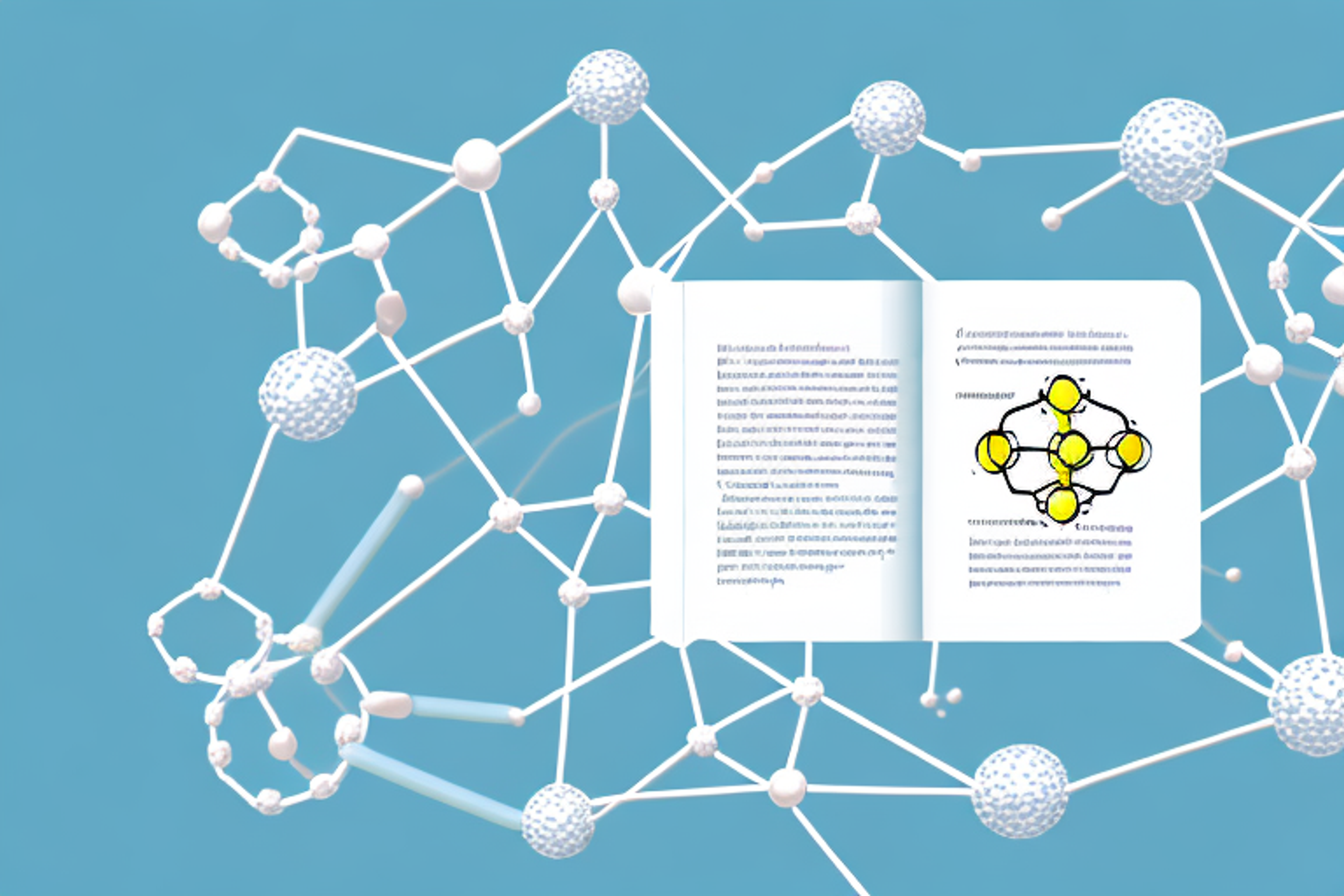Mastering MCAT Biochemistry: Key Concepts and Study Resources
Looking to ace the MCAT Biochemistry section? Look no further! Our comprehensive guide covers all the key concepts you need to know and provides top study resources to help you master this challenging subject.
Posted June 13, 2025

Table of Contents
Are you preparing for the MCAT Biochemistry section but feeling overwhelmed or unsure about where to begin? Don't worry, you're not alone! Biochemistry may seem like a daunting subject, but with the right resources and understanding of key concepts, you can master it and improve your chances of success on the MCAT.
Introduction to the MCAT Biochemistry Section
The MCAT Biochemistry section has a total of 59 multiple-choice questions and is designed to assess your understanding of biochemical principles, metabolism, and cellular processes. This section has a total of 95 minutes to complete. It requires a thorough understanding of the structure and function of biomolecules such as proteins, carbohydrates, lipids, and nucleic acids. Furthermore, the section tests your ability to apply biochemical concepts to physiological processes, genetics, and the molecular basis of immunity.
It is important to note that the MCAT Biochemistry section also includes questions related to laboratory techniques commonly used in biochemistry research. These questions may require you to interpret data from experiments or understand the principles behind common laboratory techniques such as gel electrophoresis or chromatography. Therefore, it is essential to have a solid understanding of both theoretical concepts and practical applications in biochemistry to perform well on this section of the MCAT.
Understanding the Structure and Function of Biomolecules
Biomolecules are large molecules that play crucial roles in biological processes. They include proteins, carbohydrates, lipids, and nucleic acids. Understanding the structure and function of these biomolecules is essential for success in MCAT Biochemistry. For example, proteins are composed of amino acids, which are linked together by peptide bonds and fold into complex structures that dictate their function. Carbohydrates are classified into monosaccharides, disaccharides, and polysaccharides based on their number of sugar units. Lipids are diverse and can function as energy reserves, signaling molecules, or cellular membrane components. Finally, nucleic acids are the building blocks of DNA and RNA, which carry genetic information.
Proteins are not only important for their structural role in cells, but also for their enzymatic activity. Enzymes are proteins that catalyze biochemical reactions, allowing them to occur at a faster rate than they would without the enzyme. This is essential for many biological processes, such as digestion and cellular respiration.
In addition to their role in energy storage and membrane structure, lipids also play a crucial role in cell signaling. Lipids can act as signaling molecules, such as hormones, that communicate information between cells. They can also be involved in intracellular signaling pathways, which regulate cellular processes such as growth and differentiation.
Enzymes and Metabolism: Key Concepts for MCAT Biochemistry
Enzymes are proteins which catalyze biochemical reactions, including metabolic processes. Metabolism refers to all the chemical reactions that take place in the body. It includes catabolism, which breaks down molecules into smaller units to release energy, and anabolism, which builds complex molecules from simpler units. Understanding the regulation of enzymes and metabolic pathways is crucial for MCAT Biochemistry. For example, glycolysis is a metabolic pathway that generates ATP from glucose. It occurs in the cytosol of cells and involves energy investment and energy payoff phases. Other key metabolic pathways include the citric acid cycle, which generates electron carriers, and the electron transport chain, which generates ATP via oxidative phosphorylation.
Enzymes are highly specific in their catalytic activity, meaning that each enzyme is designed to catalyze a specific reaction. This specificity is due to the unique three-dimensional structure of the enzyme, which allows it to interact with specific substrates. Enzymes can also be regulated by various mechanisms, such as allosteric regulation, where a molecule binds to a site on the enzyme and changes its shape, or covalent modification, where a chemical group is added or removed from the enzyme to activate or deactivate it. Understanding the mechanisms of enzyme specificity and regulation is essential for understanding metabolic pathways and their regulation in the body.
Carbohydrate Metabolism: Glycolysis, Gluconeogenesis, and the Citric Acid Cycle
Carbohydrates are an essential source of energy for the body. Glycolysis is a metabolic pathway that converts glucose into pyruvate, generating ATP in the process. Gluconeogenesis is the reverse of glycolysis and allows cells to generate glucose from non-carbohydrate precursors. The citric acid cycle, also known as the Krebs cycle, is a series of biochemical reactions that occurs in the mitochondrial matrix and generates NADH and FADH2 for the electron transport chain.
Carbohydrate metabolism is tightly regulated by hormones such as insulin and glucagon. Insulin promotes the uptake of glucose by cells, while glucagon stimulates the breakdown of glycogen into glucose. Dysregulation of these hormones can lead to metabolic disorders such as diabetes.
In addition to glucose, other carbohydrates such as fructose and galactose can also be metabolized through glycolysis and the citric acid cycle. However, the metabolism of these sugars differs from that of glucose and can have different effects on the body. For example, excessive consumption of fructose has been linked to the development of metabolic syndrome and non-alcoholic fatty liver disease.
Lipid Metabolism: Fatty Acid Oxidation and Synthesis, Ketone Bodies, and Cholesterol Biosynthesis
Lipids play essential roles in cellular processes, including energy storage and membrane formation. Fatty acid oxidation occurs in the mitochondria and converts fatty acids into acetyl-CoA, which enters the citric acid cycle. Lipid synthesis occurs in the cytoplasm and involves the conversion of acetyl-CoA into fatty acids and the subsequent esterification to generate triglycerides. Ketone bodies are produced when fatty acid oxidation exceeds glucose oxidation. Cholesterol biosynthesis occurs in the liver and starts with the conversion of acetyl-CoA into HMG-CoA.
Protein Structure and Function: A MCAT Biochemistry Guide
Proteins are essential biomolecules that perform a wide range of functions in the body. Understanding protein structure and function is essential for MCAT Biochemistry. Proteins are composed of different levels of structural organization, including primary, secondary, tertiary, and quaternary structures. The primary structure refers to the amino acid sequence, while the secondary structure refers to the folding of the amino acid chain into alpha-helices and beta-sheets. The tertiary structure refers to the 3D shape of the protein molecule, while the quaternary structure refers to the association of multiple protein molecules to form a functional complex.
Amino Acid Metabolism: Transamination, Deamination, and Urea Cycle
Amino acids are the building blocks of proteins and play critical roles in many cellular processes. Understanding amino acid metabolism is essential for MCAT Biochemistry. Transamination is the transfer of an amino group from an amino acid to a ketoacid, generating a new amino acid and a new ketoacid. Deamination is the removal of the amino group from an amino acid, generating ammonia and a ketoacid. The urea cycle allows cells to convert toxic ammonia into urea, which is excreted in urine.
Nucleic Acids and DNA Replication: A Comprehensive Overview for MCAT Biochemistry
Nucleic acids are essential biomolecules that play key roles in genetic information storage and transfer. Understanding nucleic acid structure and function is crucial for MCAT Biochemistry. DNA replication is the process by which cells copy their DNA. It involves the unwinding of the double helix, the synthesis of new strands of DNA, and the re-formation of the double helix. Errors in DNA replication can lead to mutations and genetic diseases.
Gene Expression: Transcription, Translation, and Protein Folding
Gene expression is the process by which DNA is converted into functional proteins. Understanding gene expression is critical for MCAT Biochemistry. Transcription is the process by which DNA is converted into mRNA, which carries the genetic information to ribosomes for translation. Translation is the process by which mRNA is translated into functional proteins. Protein folding is the process by which newly synthesized proteins adopt their functional conformation, which is essential for their activity.
Cellular Respiration and Oxidative Phosphorylation
Cellular respiration is the process by which cells convert glucose and oxygen into ATP, which provides energy for cellular processes. Understanding cellular respiration is essential for MCAT Biochemistry. Oxidative phosphorylation is the process by which ATP is generated via the electron transport chain and the action of ATP synthase.
Immune System: Biochemical Basis of Antibody Production
The immune system is responsible for protecting the body against pathogens and foreign substances. Understanding the biochemical basis of antibody production is essential for MCAT Biochemistry. Antibodies are proteins produced by B cells that recognize and bind to specific antigens. Antibody production involves the activation of B cells, the synthesis of antibodies, and the subsequent immune response.
Study Resources for Mastering MCAT Biochemistry
There are several resources available for students preparing for the MCAT Biochemistry section. These include textbooks such as Lehninger's Principles of Biochemistry and Course Review Materials such as Kaplan's MCAT Biochemistry Review. Online resources include Khan Academy, which provides video lectures and practice questions, and AAMC's MCAT Official Prep Hub, which provides practice exams and study guides. Additionally, consider forming a study group or working with a tutor to aid your preparation.
Tips for Effective MCAT Biochemistry Preparation
Effective MCAT Biochemistry preparation involves consistent, focused study and a deep understanding of the subject matter. Start by reviewing foundational concepts and working your way towards understanding more complex biochemical pathways and processes. Create a study schedule that allows for regular practice and review, and consider taking practice exams to assess your progress and identify areas for improvement. Additionally, utilize study resources such as flashcards, diagrams, and study groups to aid your preparation.
Conclusion: Mastering MCAT Biochemistry
Mastering MCAT Biochemistry requires a thorough understanding of key concepts, biochemistry pathways, and the ability to apply these principles to cellular processes. With the right resources, study habits, and dedication, you can improve your chances of success on the MCAT and beyond. Good luck on your MCAT Biochemistry preparations!
Browse hundreds of expert coaches
Leland coaches have helped thousands of people achieve their goals. A dedicated mentor can make all the difference.











